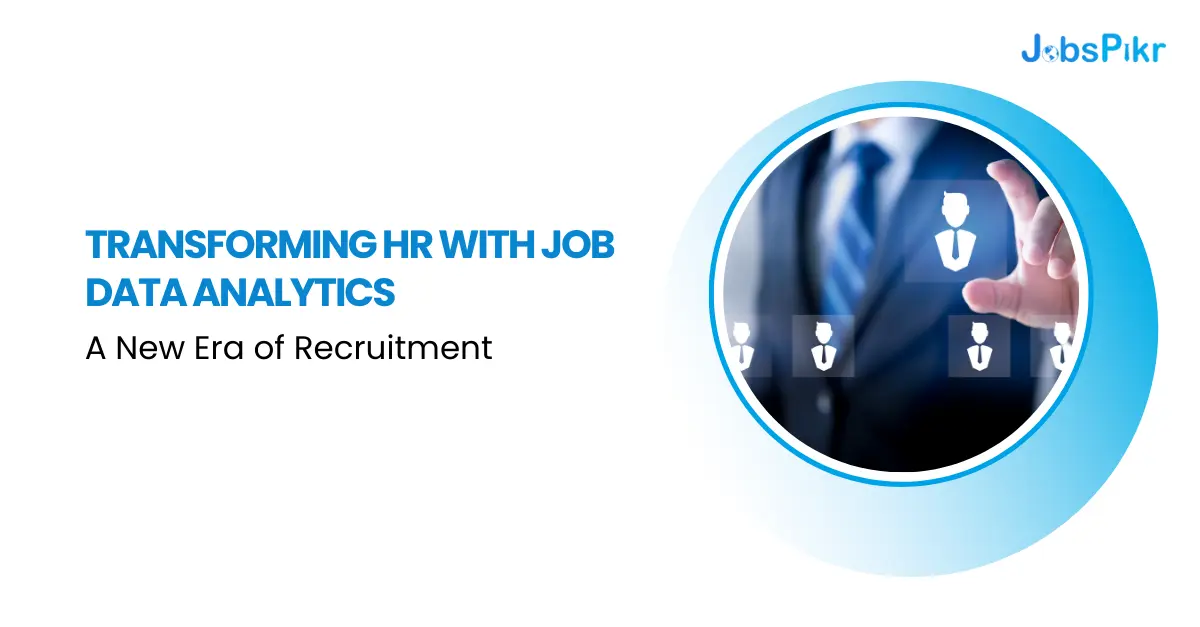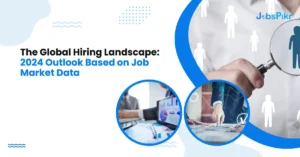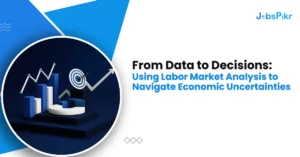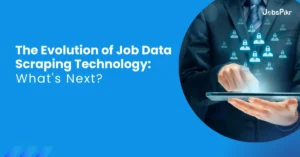Introduction to Job Data Analytics and Career Advancement
In the contemporary job market, leveraging job data analytics epitomizes a paramount strategy for career advancement. Human Resources professionals increasingly harness data-driven insights to refine recruitment processes, tailoring search criteria to pinpoint apt candidates. This empirical approach not only augments the hiring precision but also enhances the candidate experience. By analyzing employment trends, skill requirements, and performance metrics, job data analytics enable individuals to align their career trajectories with market demands, consequently elevating their professional stature and catalyzing progression within their chosen fields.
Understanding the Fundamentals of Job Market Data
Job market data comprises a wide array of statistics that reflect the state of employment. HR professionals and recruiters must grasp several core aspects:
- Employment Trends: Tracking historical and current data to predict future job market movements.
- Labor Supply and Demand: Analyzing the balance between employer needs and available workforce.
- Wage Statistics: Understanding compensation benchmarks and variations across different sectors and regions.
- Skill Demands: Recognizing the specific skills and qualifications sought by employers.
- Demographic Insights: Taking into account factors like age, gender, education, and other demographic elements that shape the job market.
- Economic Signals: Integrating broader economic indicators, such as GDP growth, that influence both job creation and overall stability.
Proficiency in these areas is critical for leveraging job data analytics effectively in HR and recruitment strategies.
The Role of Big Data in Modern Career Management
Big Data revolutionizes career management by offering insights into labor market trends, skill demand dynamics, and individual career trajectories.
- It empowers professionals to make decisions informed by data when it comes to upskilling and long-term development.
- HR professionals utilize Big Data to craft customized career paths for employees, ultimately boosting retention and satisfaction.
- Predictive analytics derived from Big Data provides employees with insights into potential future opportunities and potential threats to job security.
- It supports workforce planning, aligning employee aspirations with organizational needs and future industry requirements.
- Big Data tools help identify skill gaps in real-time, allowing for proactive career adjustments and training.
Big Data acts as a compass guiding career growth in an ever-changing job landscape.
Tools and Resources for Analyzing Job Data
By employing sophisticated tools and resources, organizations can significantly enhance their recruitment strategies through the application of job data analytics.
- Applicant Tracking Systems (ATS) empower HR professionals to streamline the organization and analysis of job applications, honing in on discovering the ideal candidates.
- HR Analytics Platforms offer a human touch, helping to foresee employment trends, predict workforce needs, and pinpoint crucial skills gaps.
- Social Media Analytic Tools examine the online presence and influence of potential candidates, providing an additional layer of candidate assessment.
- Surveys and Feedback Tools gather and analyze employee satisfaction and exit data to refine recruitment processes and improve retention.
- Data Visualization Software such as Tableau or Microsoft Power BI, transform complex job data into understandable and actionable insights for HR teams.
How to Interpret Job Trends and Make Data-Driven Decisions
Interpreting job trends requires keen analysis of market data. Human Resources professionals must:
- Regularly monitor industry reports to spot employment shifts.
- Use predictive analytics tools for forecasting hiring needs.
- Benchmark against competitors to identify talent gaps.
- Analyze internal data on turnover and employee satisfaction.
Making data-driven decisions involves:
- Setting clear objectives based on the current job market analysis.
- Integrating data insights into strategic HR planning.
- Utilizing performance metrics to evaluate recruitment effectiveness.
- Adapting talent acquisition strategies to real-time labor market changes.
Consistent evaluation ensures that HR strategies remain relevant and competitive.
Identifying Skill Gaps through Data Analytics
In the era where data analytics revolutionizes HR, pinpointing skill gaps becomes precise and actionable. Data-driven tools can scrutinize current workforce competencies against evolving industry standards, highlighting deficiencies that impede organizational growth. By leveraging information from job performance metrics, employee assessments, and training programs, HR professionals are empowered to:
- Detect areas where employee skills do not align with job requirements or strategic goals.
- Tailor development programs to address these gaps, ensuring that training is both efficient and effective.
- Monitor career progression and readiness for future roles to facilitate internal mobility.
Through careful analysis, companies can thus devise strategic plans to bridge skill gaps, fostering a workforce that remains competitive and adept at meeting the challenges of an ever-changing business landscape.
The Importance of Networking and Market Intelligence
Elevating Human Resources (HR) through the lens of job data analytics relies heavily on the pivotal roles of networking and market intelligence. Networking serves as a gateway to unadvertised opportunities and cultivates vital industry connections, providing a profound understanding of nuanced market demands. Meticulous research and job data analytics contribute to market intelligence, revealing crucial insights such as employment trends, sought-after skills, and salary benchmarks. By synergizing these strategies, HR professionals are empowered to skillfully match talent with opportunities, enhance recruitment processes, and foresee workforce requirements. This, in turn, cultivates organizational resilience and facilitates growth within a fiercely competitive job market.
Optimizing Your Resume and LinkedIn Profile with Analytics
In the digital arena, job seekers must leverage analytics to enhance their resume and LinkedIn profiles. By utilizing job data analytics:
- Identify Keywords: Scrutinize job descriptions using analytics tools to discern frequently mentioned skills and terminologies.
- Customize Content: Tailor your resume and LinkedIn experiences to reflect analytics-informed language aligning with industry demands.
- Measure Engagement: Track profile views and interactions to understand how changes affect visibility.
- A/B Testing: Experiment with different resume formats or profile summaries, monitoring which yields better networking or job opportunities.
- Continuous Improvement: Refine content based on feedback from analytics, ensuring it resonates with the targeted job market or industry.
Analytics-driven optimizations can significantly enhance the impact and visibility of your professional profiles amidst a competitive job landscape.
Using Predictive Analytics to Future-Proof Your Career
Source: Recruitment updates
In a rapidly evolving job market, proactive career management is paramount. Leveraging predictive analytics facilitates personal career development, offering insights that inform strategic decision-making. Individuals can analyze trends to identify skills in demand, adapting and upskilling accordingly. By understanding likely future shifts in their industry through data, employees can align their career trajectory with market needs, optimizing job stability and growth potential. Engaging with predictive analytics not only enhances employability but also empowers professionals to navigate their careers with confidence and foresight.
Case Studies: Success Stories Using Job Data Analytics
- Techmatics Inc.: By leveraging job data analytics, Techmatics reduced its time-to-hire by 30%. Advanced algorithms assessed candidate profiles against job requirements, enabling quicker, data-driven decision-making.
- HealthCare United: Implementing predictive analytics, HealthCare United identified critical skills gaps in their workforce. They restructured their talent acquisition strategy to prioritize these competencies, increasing employee retention by 25%.
- Retail Giant GoShop: GoShop used job market analytics to benchmark salaries and benefits against industry standards. This led to a tailored compensation strategy that decreased turnover by 20% and attracted top talent.
- EduTutors Online: With job data analytics, EduTutors forecasted demand for online tutors in various subjects, optimizing their recruitment calendar and reducing hiring costs by 15% while ensuring a steady supply of qualified tutors.
- Finserve Partners: Finserve utilized job data analytics for workforce planning. They anticipated future industry trends, aligned their talent needs accordingly, and secured a competitive edge by preemptively recruiting for emerging roles.
Continual Learning and Adaptation in a Data-Driven World
In the relentless advance of technology, HR professionals must embrace continual learning and adapt to leverage job data analytics effectively. As data proliferates, the necessity to discern patterns and predict trends has never been more critical.
- HR must constantly update methods to harness vast data streams, optimizing the recruitment process.
- With predictive analytics, they can anticipate industry shifts, ensuring an agile workforce.
- Regular training in data analytics tools becomes imperative for staying competitive.
- Adaptation to data-driven strategies enables personalized candidate experiences, enhancing engagement.
- Continuous feedback loops from analytics inform and refine HR strategies, maintaining relevance in dynamic labor markets.
Embracing these principles ensures that HR departments remain pivotal in shaping a responsive and informed organizational culture.
Networking and Leveraging Professional Relationships Analytically
In the realm of HR, job data analytics revolutionizes networking and the strategic use of professional relationships. Advanced analytics enable HR professionals to:
- Identify key influencers and connectors within specific industry domains.
- Analyze the impact of professional relationships on job performance and hiring success.
- Strategically engage with professional networks based on data-driven insights.
- Tailor communication and outreach efforts to the networking habits of top talent.
- Evaluate the strength of referral programs and adjust approaches for optimization.
Through meticulous analysis, HR can maximize the potential of networking, transforming how professionals interact and leverage relationships for recruitment success.
Developing a Strategic Career Plan with Data Insights
In the landscape of HR and recruitment, the utilization of job data analytics can revolutionize how professionals approach their career trajectories. With comprehensive data insights:
- Individuals can identify emerging industry trends, aligning their skill development accordingly.
- They can assess market demand for certain positions, and adjust their career plans to target growth sectors.
- Data analytics enable an understanding of salary benchmarks, leading to informed negotiations.
- By analyzing successful career pathways within their fields, aspirants can emulate proven strategies.
- Professionals can also gauge the effectiveness of their networking strategies through data on successful job placements.
Leveraging data insights not only informs the development of a strategic career plan but also empowers professionals to take proactive and informed steps toward career advancement.
The Ethical Implications of Job Data Analytics
The integration of job data analytics in HR processes raises significant ethical considerations. Organizations must navigate the delicate balance between data-driven efficiency and respect for candidate privacy. Key ethical concerns include:
- Informed Consent: Candidates should have clear understanding and the option to agree to how their data is utilized.
- Data Security Priority: Safeguarding sensitive information is a top priority, crucial for maintaining trust and meeting legal obligations.
- Bias Mitigation: Regularly audit and update systems to prevent algorithms from unintentionally perpetuating biases, ensuring fair decision-making.
- Purposeful Data Use: Institutions must strictly use data for intended purposes, preventing any misuse that could harm individuals’ opportunities.
By addressing these ethical challenges, companies ensure that the use of job data analytics aligns with both their strategic goals and moral responsibilities.
Conclusion: Taking Control of Your Career Path Using Data Analytics
Navigate your career with precision using Jobspikr’s data analytics. Gain insights into industry trends, skill demand, and employment patterns, positioning yourself as a top candidate. Make data-informed decisions for growth, training, and strategic networking. Jobspikr transforms you from a passive job seeker to a proactive career architect, optimizing every move for long-term success in the dynamic job market. If you seek a job data analytics service, choose Jobspikr for unparalleled support.




